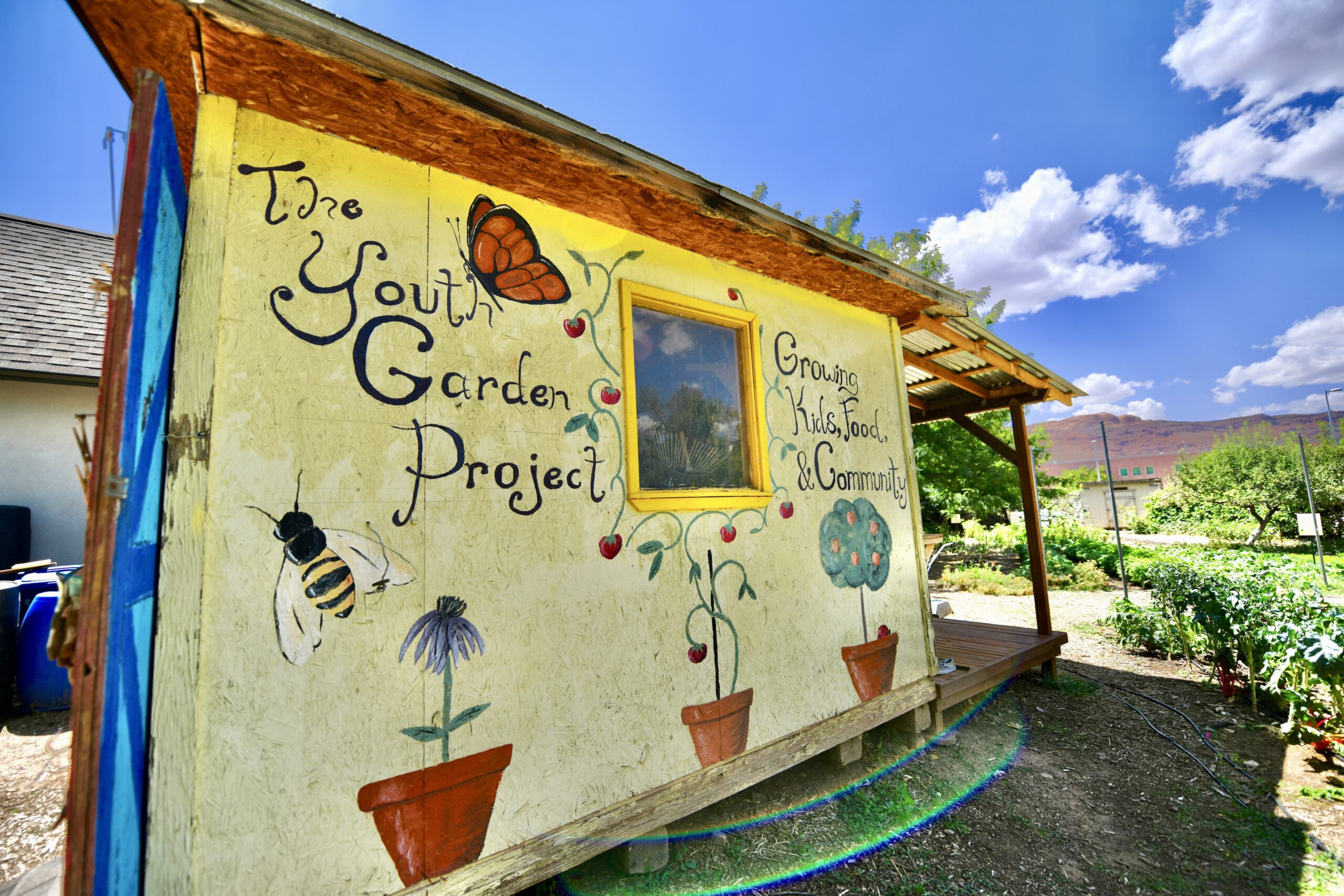Some information may be outdated.
Moab is an oasis in the desert, and for some, gardening here is a lifestyle choice. The Moab Sun News chatted with a few of our town’s local gardeners to collect tips for a productive gardening season: find the past two weeks’ editions of the Moab Sun News for parts one and two.
The Youth Garden Project
The Youth Garden Project is a local nonprofit that grows food on a 1.5 acre garden, hosts students and local kids for outdoor education programs, and hosts a number of community events. This season is Ben Menard’s second as the farm manager at YGP: he gave some tips about maintaining tomatoes in the hot summer sun and how to deal with squash bugs.
“The summer sun, while usually the garden’s best friend, can be foe out here in the desert,” Menard said. “One of the first tips I heard about growing tomatoes here is to leave a lot of the suckers on. Normally you would prune these off-shoots to keep the main vine robust and easier to manage, but leaving some on will provide more natural shade for keeping the plant and the soil beneath it cool. Mulching underneath tomatoes with alfalfa or another green mulch will also help keep the soil cool and at a more consistent moisture level while slowly adding some nutrients to the soil.”
Menard said he often hears that battling squash bugs can feel like enough to turn community members off of gardening altogether. But while there’s no “one simple trick” for ridding gardens of the bugs, Menard said, he does have a few tips for management.
“Catching the eggs before they hatch is the best way to keep the plants healthy—they can be removed by sticking them with duct tape, burning them with a small handheld propane torch, or pinching that small part off the leaf,” he said. “If you don’t get to them in time and the nymphs begin to drain the leaves of life, use a small hand held vacuum to suck the little buggers up. For the adults, which often hide around the base of the plant, flood it briefly with a hose. This causes them to emerge and climb up the stems, making it quicker to grab a bunch at one time.”
YGP also hosts a number of classes: most recently, the organization hosted Emily Stock of Sundial Medicinals to host an essential herbs workshop. When it comes to herbs, Stock said, “the less you try, the more they will thrive.”
Rebecca Mann, Moab Community Gardens and the Resiliency Hub
Rebecca Mann is the director of Moab Community Gardens, which offers multiple community garden spaces around Moab. She’s also on the board of the Resiliency Hub, a nonprofit that focuses on permaculture, gardening, and upcycling.
Mann’s biggest piece of advice: don’t be afraid to tackle the weedy and overgrown sections of your garden, despite them seeming tough to manage. She broke down her process into three steps.
“1. Use a hula hoe early in the season to scrape out the seedlings with their roots when they are small and manageable—this can save a lot of time spent on hands and knees pulling out larger, individual plants.”
“2. Sheet mulching! After removing as much weedy material as is reasonable, put down a thick layer of cardboard and cover it with four to six inches of wood mulch; this will help keep out all plants. Farm & City often has a pile of cardboard pallet separators on hand that they will give away for free if you ask at the front counter, and the wood mulch from the Solid Waste District is amazing.”
“3. Divide and conquer: If you don’t want to completely cover an area with sheet mulch, I like to create manageable chunks. Mark out sections (squares, triangles, circles, whatever you like) by lining them with cobbles. Tackle the weeds in one section at a time; having bite-sized achievable goals makes weeding less stressful. After weeding one of the sections, seed it with native seeds, using irrigation to get it started.”
Her last tip: know what plants are weeds and what aren’t—weeds can be easily mistaken for range plants, and you don’t want to find yourself accidentally digging up something beneficial. Mann recommended gardeners peruse the University of Utah Exension’s range plants of Utah list, which can be found at https://extension.usu.edu/rangeplants/.
Additional reporting by Alison Harford/Moab Sun News.
Appreciate the coverage? Help keep local news alive.
Chip in to support the Moab Sun News.





